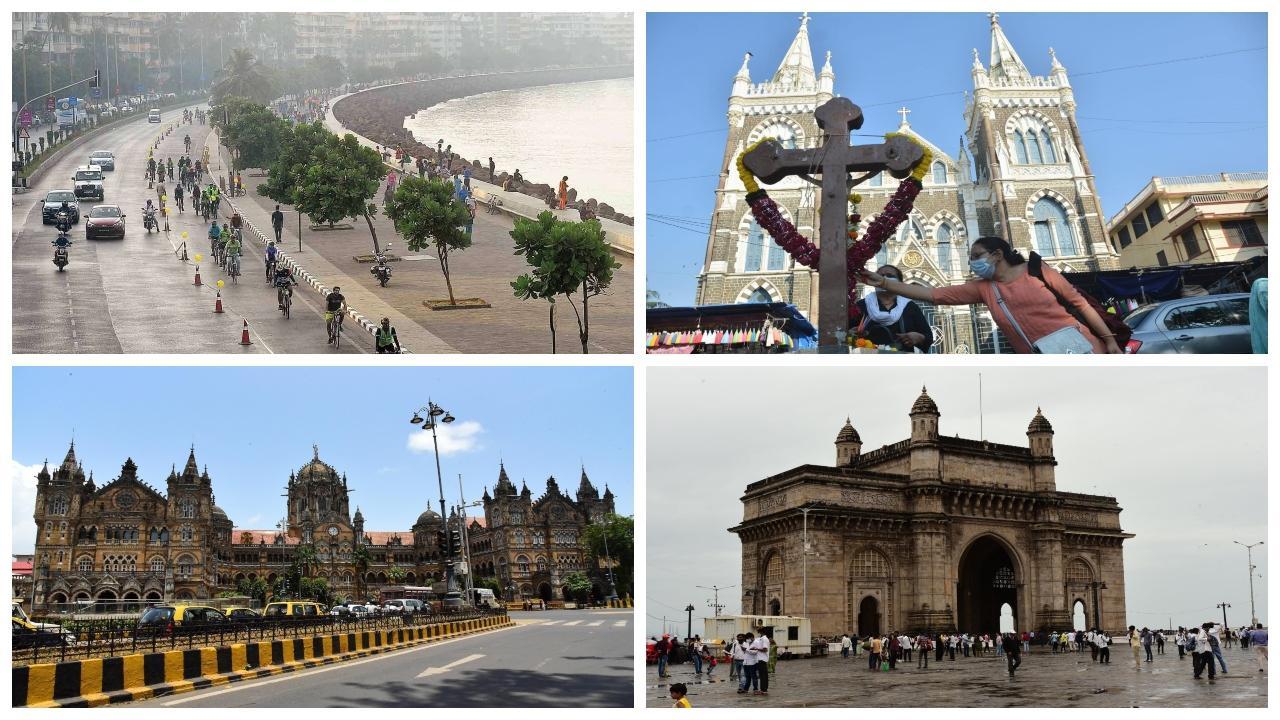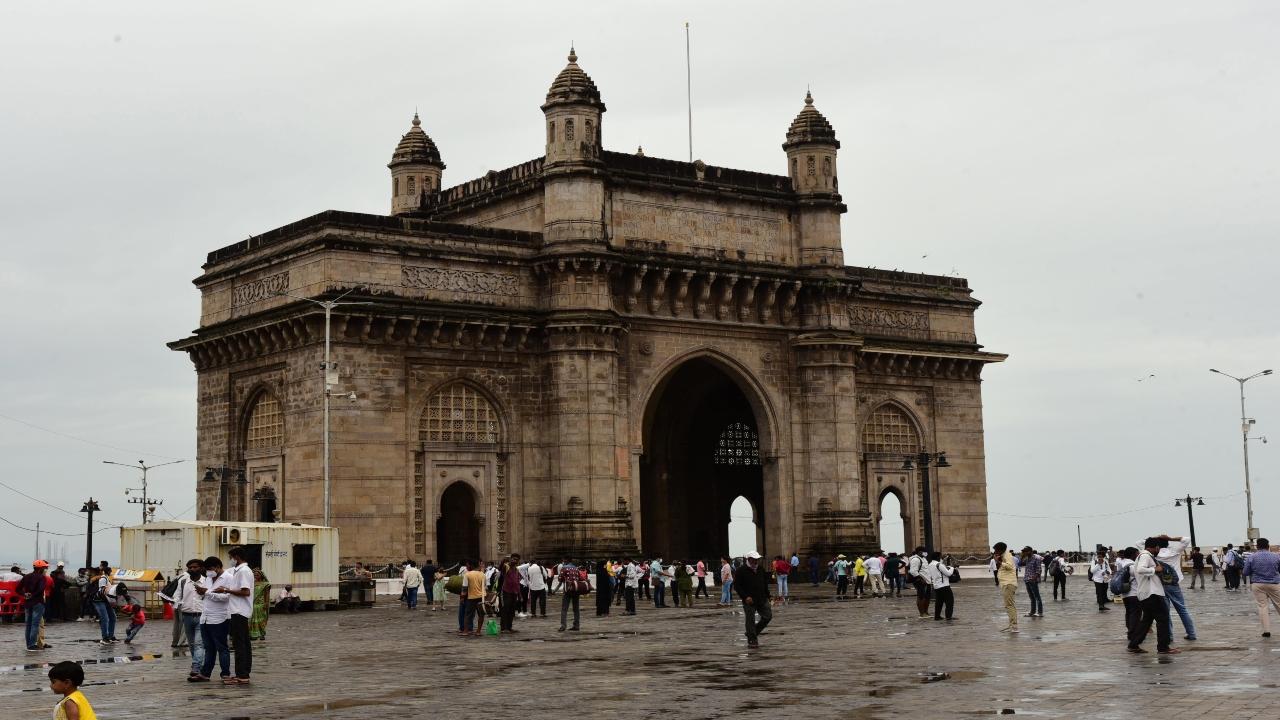
On World Heritage Day 2022, here are some lesser-known facts about 10 historical sites in Mumbai. Pics/Mid-Day Photo team
Updated On: 2022-04-18 06:04 PM IST


Gateway of India
To welcome King Geroge V and Queen Mary, the majestic structure of the Gateway of India was conceptualised in 1911. They were, however, presented only with a cardboard dummy of the structure as the actual construction of the monument was started in 1915. While it was once an entry point for all prominent Britishers to visit Mumbai, the last British ships sailed from the Gateway of India in 1947 to leave the country.
The Asiatic Society of Bombay
Located in south Mumbai, the Asiatic Society of Bombay houses thousands of original copies of books from the early centuries including one of the two original manuscripts of the Divine Comedy, an Italian narrative poem written by Dante Alighieri in 1320. Founded by Sir James Mackintosh, the library is also a rich repository of over 10,000 rare coins and thousands of maps.
Banganga Tank
Surrounded by more than 50 temples, the Banganga tank is also known as the land of temples. According to legend, Lord Ram and his brother Laxman made a Shivlinga out of sand in one of the temples. As sand is called 'valu' in Marathi, the area later came to be known as Walkeshwar. As per history, when Lord Ram was thirsty, he shot an arrow (ban) with his bow and the water (ganga) gushed out from under the ground because of which the tank was named as 'Banganga'.
Chhatrapati Shivaji Maharaj Terminus (CSMT)
The CSMT monument, earlier called Victoria Terminus, was constructed at a cost of Rs 16 lakh to commemorate the golden jubilee of Queen Victoria. At the entrance of CSMT, there are statues of lion and tiger, representing Britain and India. respectively. In 1887, the terminal started with six platforms, but was later modified due to an increase in passenger footfall. In 1929, additional platforms were added to accommodate trains coming from other cities to Mumbai
Mount Mary Church
The current statue of Virgin Mary dates to the 16th century when a Jesuit priest wanted to construct a chapel. The original statue is from Portugal, but was found after a fisherman had a dream of finding a statue in the sea. The statue was found floating in the sea between 1700 and 1760. The interior walls of this basilica's structure have fiberglass murals that emphasise the events in Virgin Mary’s life.
David Sassoon Library & Reading Room
In 1863, Sir David Sassoon contributed Rs 60,000 to the government to build a Mechanic's Institute, which is now called the David Sassoon Library. Housing a series of collections on art and architecture, the library also has some rare books, including a 1978 book of letters written to Queen Anne by her secretary. It is the only library in the city which is open throughout the year.
Haji Ali
The Haji Ali Dargah is named after Pir Haji Ali Shah Bukhari, who is considered as one of the greatest Muslim saints. According to history, the saint died while on his trip to Mecca, and his casket miraculously came floating back to this place. In his memory, the Haji Ali Dargah was built in 1431.
Siddhivinayak temple
One of the richest temples in India, Siddhivinayak temple houses a unique Ganesha idol, which is sculpted out of a single black stone. The trunk of the idol is bent towards the right instead of the left, which is quite unique. In 1952, a Hanuman idol was excavated during road repair work. It was later shifted to Siddhivinayak Temple by a priest and later became a part of the temple. Siddhivinayak also houses a library with a collection of over 8,000 books on religion, literature, medicine
Marine Drive
The 'Queen’s necklace' was started as a failed project, but is now the jewel of the city. Originally the plan was to connect Nariman Point and Malabar Hill with the help of Bombay's Backbay reclamation project. But after a series of failed attempts, the project was left out. A post lamp near Girgaum Chowpatty has an inscription which claims that the construction of Marine Drive began at the Kennedy Sea Face in 1915. It was named after an engineer Sir Michael Kavanagh Kennedy who was a General in the British Army and also a Secretary of the Public Works Department Bombay.
NGMA
One of the most notable museums of art in India, NGMA Mumbai was earlier an auditorium known as the Sir Cowasji Jehangir Public Hall. The hall was gifted to the city by Sir Jehangir, and was the only prominent one in the Colaba area till the museum was opened to the public in 1996.